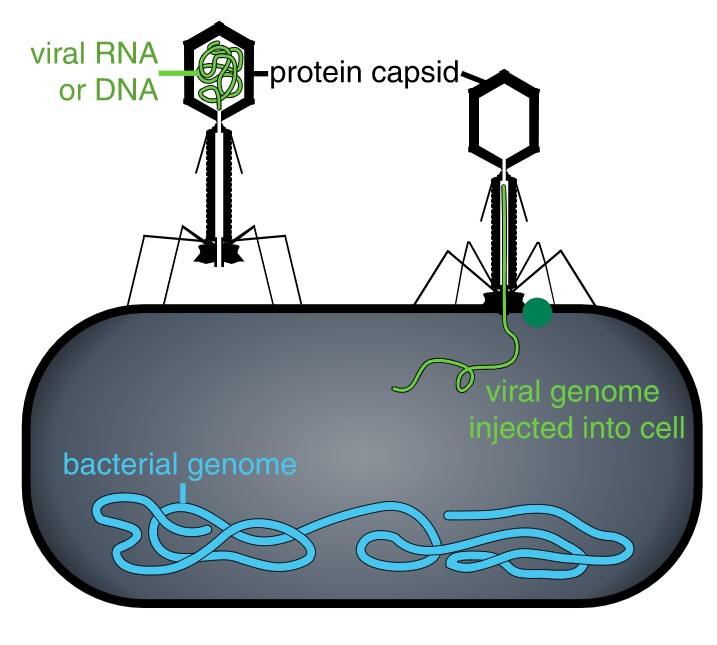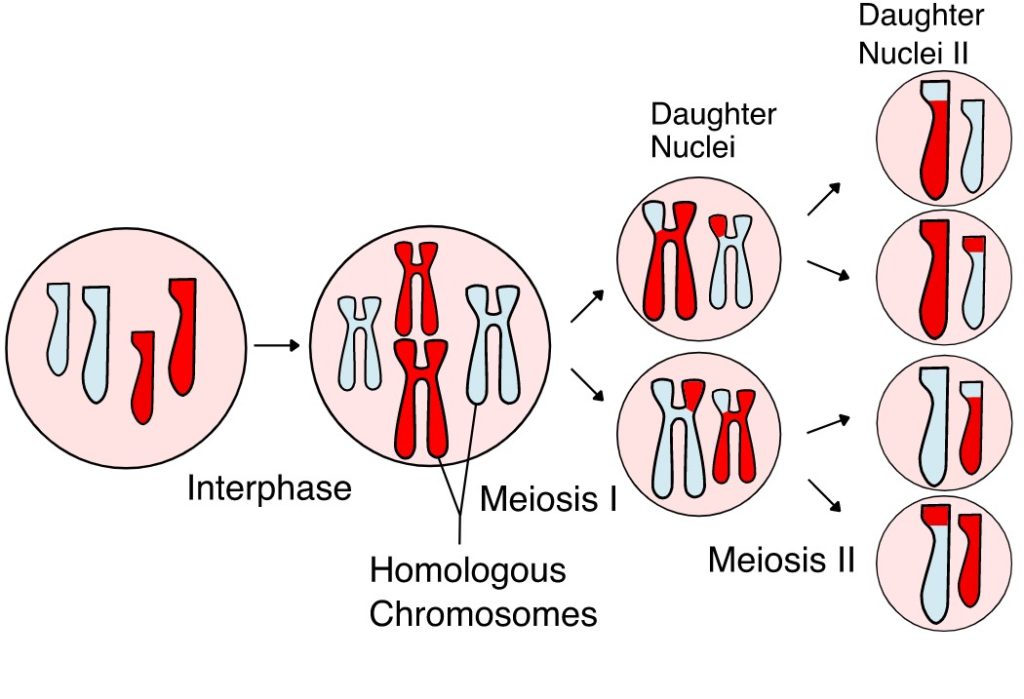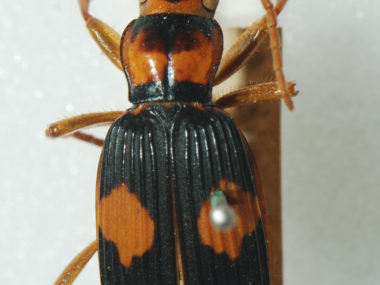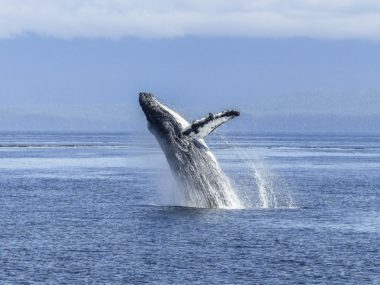Viruses have caused immense human suffering and loss. The simple fact is, however, that viruses are an intimate part of God’s biological creation; a creation He called good in the beginning. The abundance of viruses and designs inherent in viral lifestyles give evidence of their role in creation.
The views expressed in the article reflect those of the author mentioned, and not necessarily those of New Creation.
The viral load on earth is tremendous; they are the most numerous biological organisms on earth. Estimates put the load at 1031 viruses with 1027 viruses being produced every minute.1 Because bacteria are the second most numerous creatures on earth, most of the viruses on earth are bacterium-invading viruses called bacteriophages (phages). Each bacterial species can carry a load of several different types of phages. Phages are also the most dominant virus in the human body and are more numerous than the 30 trillion cells which make up the human body.
Most viruses on earth are not lethal or life on earth would be subject to virus-based extinction! Curiously, only a few of the hundreds of thousands of virus species which are projected to exist are known to cause pandemics. For instance, influenza, smallpox, corona, human immunodeficiency, Ebola and Zika viruses are classified as causing pandemics. However, it could be argued that Ebola and Zika viruses have been associated with epidemics rather than pandemics. Similarly, measles virus is regarded as causing epidemics even though it is one of the most infectious viruses. Regardless, most viruses on earth are not causing illness in humans.
What then is their role on earth? They appear at first glance to be leftover parts…pieces of DNA, protein and lipids which have run rogue. However, a closer look shows immaculate design features in their structure and function.
Virus structure and kinds
Although we typically have not classified the microbial world into kind groups or baramins, plant viruses, animal viruses, and phages could be considered as three kind groups. For instance, phages tend to be the most elaborate viruses structurally.

They contain intricate head and tail structures with spectacular geometric head groups, space-ship style landing feet for engaging their host, and spring loaded syringe-like DNA injectors. Some long swirly filamentous phages can clamp onto the ends of bacterial flagellum and others using a thin filament acting like a nut on a bolt, can cork-screw down a bacterial flagellum. Plant viruses tend to have stiff isometric shells or rods, typically reaching the plant cell interior with injection by insects. Only a few plant viruses have a lipid envelope.
Lipids: Fatty acids that make up parts of cells. Lipids are insoluble in water, meaning they do not dissolve in water.
Animal viruses can also have geometric outer protein shells but many animal viruses that cause illness display a lipid envelope. Given that 1) only a relatively few animal viruses cause major illness, 2) they tend not to develop a long term association with humans and animals, and 3) some aspects of their lipid envelopes can be obtained from their host, it could be hypothesized that animal viral based infection might be a secondary post-Fall adaptation. More work needs to be done to determine if this is a valid hypothesis.
Phage support of the biomatrix
Phages are the most abundant virus on earth and most likely the most abundant biological organism on earth. They are known to play a role in population modulation of bacteria and can act as potential agents of bacterial speciation as they can integrate in the host genome. Because they modulate the population of cyanobacteria, a dominant global photosynthesizing aquatic bacterium, they play a role in the global carbon and oxygen cycles.
Population Modulation: Affecting (modifying) the size of bacteria’s population
Sentinels: soldiers or watch keepers
And they may play a role in the maintenance of the human microbiome by acting as sentinels of microbiome population size and health, and shielding the microbiome from the human immune system.
Although phages can introduce genes into microbiome bacteria with the possibility of promoting speciation, they may, in fact, play a more conserving role given that gut bacteria like E.coli have remained identifiable as E.coli for nearly 100 years of observation.
Viruses as immune system sentinels
Bacteria can retain phage genome segments from non-lethal phage infections as a way to compare the nucleic acids they retain with the genome of future invaders. This exhibits a form of immunological memory which was once thought to be only a part of complicated mammalian systems. Plants harbor viruses which can control fungal infections and also promote or discourage insect attraction to the plant. For instance, Cryphonectria hypovirus 1 is famous for attenuating the fungus that caused the fungal blight that nearly wiped out all of the chestnut trees in North America in the last century. This majestic tree along with its viral symbiont is making a comeback.

Human and mammal genomes contain endogenous retroviral DNA (ERV) sequences in great abundance. ERV-DNA, which is postulated to come from an infection early in the history of life, is more abundant in the human genome than the DNA gene sequences which code for proteins. Creationists believe that ERVs may have indeed been part of the original creation in humans and mammals. We now know that ERVs can be involved in modulating the immune system by causing activation or muting of the immune response. For instance, expression of ERV proteins in the cells of the placenta can dampen the mother’s immune response near the developing embryo and fetus. Additionally, evidence is accumulating that ERV generated proteins during exogenous virus infection aids the immune response by producing alternate nonfunctional pieces of the invading virus. When these pieces are integrated into the foreign virus during replication the virus cannot function.
But why were we created with viruses to fight viruses? We know that the human body harbors microbiome bacteria that can protect against pathogenic bacteria, so perhaps ERVs perform a similar function and perhaps even serve as a filter for beneficial viruses. However, there are only a few animal viruses within the human body which persist throughout our lives. It’s very possible that because of our focus on pathogenic viruses that we have not been looking for benign or helpful viruses.
Viruses as Altruistic Genetic Elements (AGE)2
Could viruses have been used as AGEs in the past to promote the rapid diversification of animal kind groups after the Flood? Even though we do not see this activity now we cannot rule it out. There may be some remnants of this activity in the ability of viruses to introduce genes into plants and bacteria and influence their appearance or survival. For instance, the tulip breaking viruses, which create colorful tulips and similar effects in other angiosperms may be an example of a remnant of a more dramatic ability of viruses to influence organisms in the past. Recent studies show that ERVs may be in a good position to cause genetic variation since they are known to influence the creation of transcriptomes during the meiotic formation of gametes.

Altruistic Genetic Elements: sections of DNA that were created to move around, affecting the expression of other genes and the rapid diversification of organisms.2
Transcriptome: copies of genetic information made from DNA that may or may not be used to express genes at a later time
Creationists believe that rapid speciation may have occurred in bursts in the past. Interestingly, genome integrating viruses might be good candidates as a short-term causative AGEs of speciation because they could induce genetic changes and subsequently insert into the genome; then using the newly integrated AGE as an alert system, the newly created species would be immune to further rapid speciation.
Conclusion
In summary, viruses appear to play vital roles in the biomatrix by assisting bacteria in providing essential nutrients for life on earth. Viruses also play a role in host defense and promoting beauty in flowering plants as well promoting microbiome health. The abundance of phages in living organisms but the paucity of long term, beneficial exogenous animal viruses in humans and animals suggests that many infectious animal viruses are a post-Fall deviation. ERVs which play roles in the present may provide a clue to species plasticity and preservation in the past.
Footnotes
- Rohwer, F., Prangishvili, D. and Lindell, D. (2009), Roles of viruses in the environment. Environmental Microbiology, 11: 2771-2774. https://doi.org/10.1111/j.1462-2920.2009.02101.x ↩︎
- Wood, Todd. 2003. Perspectives on Ageing: A Young-Earth Creation Diversification Model. ↩︎











